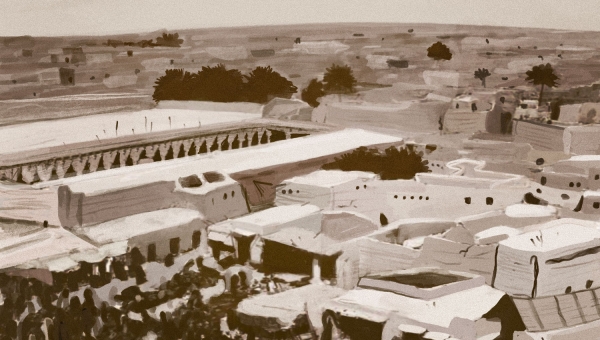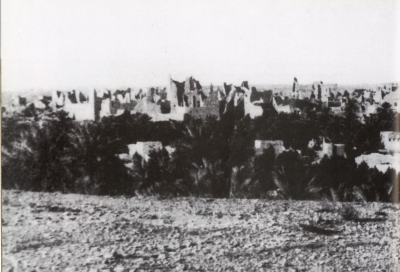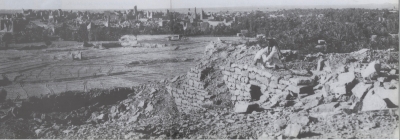

Social Life in the First Saudi State refers to the social phenomena that were observed within the First Saudi State and the regions it governed. These aspects encompass traditions and customs, relationships among community members, public and private celebrations, culture and language, and economic activities in which the population was engaged.
Culture and language in the First Saudi State
The Arabic language was the most common language used in the First Saudi State. However, it was impacted by various colloquial dialects from each of the regions governed by the First Saudi State. It also featured several foreign words. Nonetheless, the colloquial Arabic spoken in the Arabian Peninsula was closer to classical Arabic in terms of its stylistic, grammatical, morphological, and syntactic aspects. Examples thereof include the colloquial dialect spoken in Najd, where the letter Dhad is replaced by a Thad, while the letter Kaf sounds like a combined Taa and Sin. On the other hand, the letter Kaf is accentuated in the Gulf coats, thus sounding like a combined Sin and Shin. In Hail, the Taa Marbuta is rather prolonged. As such, they would pronounce the Arabic word for clock, Saa, as Saat. In Northern Najd, The letter Jim is replaced with a Yaa, where the Arabic word for Mosque, Masjid, is pronounced as Masyid.
The Saudi culture has also witnessed several types of music that were played using various instruments that marked the Saudi folklore, depending on their expansion within the various regions of the Kingdom of Saudi Arabia. These instruments include the Rebab, known north in the Kingdom, made of deerskin or wolf tanned leather wrapped on a wooden square, and consisting of a single string. It is played while poetry verses are recited amidst Majalis and the gatherings of the northern population. Another instrument is the drum, available in two forms, al-Takhmir drum, which is a large drum made of tree wood, covered with leather, and manually struck to announce war, and al-Tathlith drum, which is smaller than the first drum. It is used on special occasions. In the coastal areas, inhabitants use the Semsemiah, a multi-string instrument that was played by sailors and pearl fishers who sang sea chanties and clapped along the rhythm. In the western area of the Kingdom, people played drums and darbuka, while children whistled through an instrument known as Hawama, a whistle made from plant stem.
Social customs in the First Saudi State
The inhabitants of the First Saudi State adhered to social customs, including their dress code, which often encompassed wide-sleeved clothes, caps, and cloaks. Some scholars and bedouins wear turbans and headwraps, with many wearing al-Shemagh or Ghutra with Agal. In the southwestern areas of the Kingdom, men wear a robe and an Izar, while women wear a dress that, although similar to men's Thobe, is rather tight.
Men work outside the household to earn a living, while women do chores encompassing cooking, cleaning, and raising the children. In some regions, men and women engage in agricultural activities, where women help men with plowing, harvesting, and herding. However, during that time, marriage was not complicated. In fact, it was mainly based upon competence, where a brave and generous husband was mainly sought. Back then, a family living in the same household consisted of both spouses, their children, and grandchildren. At times, grandchildren would get married and live in their grandparents' house.
Most of the Bedouins spent their time traveling and tracking rainfall locations and water accumulation sites to find ideal pastures. They also traveled to cities to sell ghee and cattle and buy wheat and dates. However, due to their minimal work or the drought that hindered their activity, they had lots of free time they spent hunting antelopes, rabbits, chlamydotis, pterocles, and the turtle dove. In the evening, they would gather around the fire, recite poems, and exchange news. In cities, namely in the Hejaz, evening Majlis were quite common. Inhabitants would engage in talks, exchange news, and discuss the prices of goods. They even played games, such as chess and some musical instruments. In the rural areas, inhabitants spent their free time in regular majlis. However, they did not have much free time as they were bound to agricultural activities. Hence, they would sleep early to wake up before dawn and begin working.
Professions in the First Saudi State
Inhabitants of the Arabian Peninsula often had their professions passed down from their fathers, regardless of their talents. As such, they engaged in various professions, including trade, agriculture, and herding. Some families worked in blacksmithing, manufacturing, beading, perfume making, butchery, and other handicrafts.
Herding and trade in Najd
Pastures formed the main source of livelihood in Najd. This was due to its vast areas and the drought prevailing in the region. Hence, the inhabitants of Najd were known to be interested in exchanging news on rain. Historians even recounted the years of drought and rain that Najd experienced.
Significant economic elements for the Bedouins in Najd encompassed livestock and their products, where they would eat their meat and drink their milk. They also hunted desert animals, such as rabbits and antelopes. They would eat the dates they would have access to. The inhabitants of rural areas consumed milk and dairy, wheat, barley, corn, locusts, and dates, if available.
Agriculture ranked second. It mostly prevailed in areas where oases were found in deserts, such as in al-Kharj and Qassim. Agriculture and trade were the main economic pillars back then. People in Najd engaged in local, regional, and foreign trade, where local trade was mostly common among individual residents in each village, while regional trade referred to commercial exchange between the villages of Najd or between those villages and neighboring counterparts. Foreign trade engaged both the people of Najd and the residents of other regions. Najd did not produce all the products its residents needed. Hence, they had to import unavailable or insufficient products, such as some foodstuffs, clothing, and weapons. In return, some animal products, such as camel, sheep, and horse products, were abundant in Najd.
Circumambulation of pilgrims in the Hejaz region
Hajj in the Hejaz region offered a source of income, where pilgrim caravans would visit yearly, with Mutawifun (individuals engaging in circumambulation) and guides earning a fee for the circumambulation and provision of services to pilgrims. People in Hejaz would consume wheat, dates, rice, milk, and cheese. In southern Hejaz, spanning from Taif to Jazan and Najran, people would survive off agriculture and some hunting. They mainly engaged in herding, and they mostly ate agricultural produce, such as corn grains, millet, milk, dairy, and ghee.
Agriculture and diving in al-Ahsa and al-Qatif
Agriculture in al-Ahsa and al-Qatif offered a fixed income upon which both areas relied. In fact, the inhabitants of both regions were mostly farmers who were supported by the availability of running springs they dubbed al-Asyah. Their regions were also known for dates, grains, vegetables, and fruits. Diving ranked second after agriculture, where they would dive into the sea to extract pearls. Diving formed the second economic resource of the Eastern Province. It was supported by fishery resources and trade activities.
Related quizzes
Related articles

